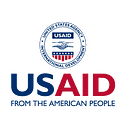CATALYZE EduFinance South Africa Secures First Investment into Increasing Access to Capital for Early Childhood Development Centers
CATALYZE EduFinance South Africa recently secured an investment of nearly $830,000[1] (R15 million) to increase access to capital for early childhood development[2] (ECD) centers serving lower-income and vulnerable families in South Africa. These investments will enable impacted centers to enhance their education offerings and improve learning outcomes for students between 2- and 5- years of age.
Investments in South Africa’s ECD sector are critical. According to a 2021 ECD Census, only 58 percent of 3-year-olds and 75 percent of 4-year-old children have access to early childhood-learning opportunities countrywide.[3] Additionally, 2022 research from Thrive by Five[4] showed that only 44.7 percent of young children between 4- and 5- years old are on track with early learning.
“The [South Africa] Department of Basic Education recently announced that two years of ECD will be compulsory for all children before they enter the formal school system in grade one. This fund has come at a critical time and is well positioned to help the school system achieve this goal.”
— Mike Brown, Nedbank Chief Executive
Greater investments in early childhood development are essential to mitigate these trends and help young children attain higher levels of school readiness for primary school. During the life of the project, EduFinance South Africa will raise over $6 million[5] (R110 million) in capital, with over 500 ECD centers in South Africa expected to benefit from direct investment and financial training. Additionally, EduFinance South Africa couples increased investment with improved education outcomes through its rewards and recognition model, which provides a first loss guarantee for the fund and incentivizes learning outcome improvements using cash and non-financial recognition incentives for high-performing ECDs.
USAID/ South Africa Mission Director, Leslie Marbury, says that USAID is proud to invest in early-childhood development and education outcomes. “We call on business leaders to partner with us and invest in childhood education for a brighter, prosperous, and more resilient South Africa.”
The South Africa ECD model is one of several being piloted in 14 countries under CATALYZE EduFinance, spanning Latin America and the Caribbean, sub-Saharan Africa, the Middle East, and Asia. In addition to an ECD (South Africa) / Early Childhood Care and Education[6] (globally) focus, EduFinance mobilizes capital and improves learning outcomes in primary and secondary education, technical and vocational education for workforce development, and works to improve enabling environments for low-fee, non-state schools.
While the models and contexts of implementation vary across the Activity, ECD investments in South Africa reflect key tenets of USAID CATALYZE and CATALYZE EduFinance:
Linking education outcomes to capital mobilized. EduFinance co-designs and implements activities with an explicit emphasis on linking capital mobilized (e.g., school improvement loans to school owners and school fee loans to families) with improved access (e.g., building a new classroom to increase student enrollment, school fee loan allowing a student to attend school) and improved learning outcomes (e.g., as a result of school investments and technical assistance to schools, students are receiving a better education).
Serving children from vulnerable families. EduFinance is designed and implemented to mobilize capital explicitly for schools serving vulnerable families. Not only is serving this group a Congressional guardrail, but addressing the needs of vulnerable populations through non-state education is strategically important to achieving broader USAID and host-country education sector gains.
Supporting host-country government education priorities. Dedicated efforts to improve access to capital to low-fee, non-state actors augments government investments into public education. EduFinance facilitates complementary partnerships with government counterparts and the private sector, in close coordination with respective USAID Missions, to ensure that low-fee, non-state schools contribute to help close education funding gaps and improve learning outcomes.
Disseminating results in local markets. Sharing successes around capital mobilization by a leading financial intermediary or investor within a market is crucial for demonstrating results and greater uptake among investors, and ultimately, scaling lending practices to low-fee, non-state schools.
Facilitating local, sustainable impacts. USAID and EduFinance’s commitment to co-create blended finance solutions with local private sector actors is critical to build education-based lending products that are financially viable following direct USAID interventions. EduFinance models directly support USAID’s localization efforts.
Read the full press release on the South Africa investment here.
About USAID CATALYZE
USAID CATALYZE (2019–2027), implemented by Palladium, is a $250 million contract designed to mobilize $2 billion in private capital towards underserved sectors, geographies, and populations across 28 countries in Africa, Asia, Latin America and the Caribbean (LAC), and Europe. CATALYZE co-creates with Missions, Bureaus, and Independent Offices (MBIOs) to design multi-year, results-based activities that are managed by Palladium and implemented by a broad network of principally locally-led implementing partners.
This page is made possible by the support of the American People through the United States Agency for International Development (USAID). The contents of this document are the sole responsibility of CATALYZE implemented by Palladium and do not necessarily reflect the views of USAID or the United States Government.
[1] Based on current exchange rate, subject to change.
[2] Early Childhood Development is a technical component under the broader umbrella of Early Childhood Care and Education (ECCE). The ECD term is used primarily in the South African context. However, EduFinance is currently co-designing multiple interventions globally under its “ECCE Family of Investments.”
[5] Based on current exchange rate, subject to change.
[6] See footnote 2.
